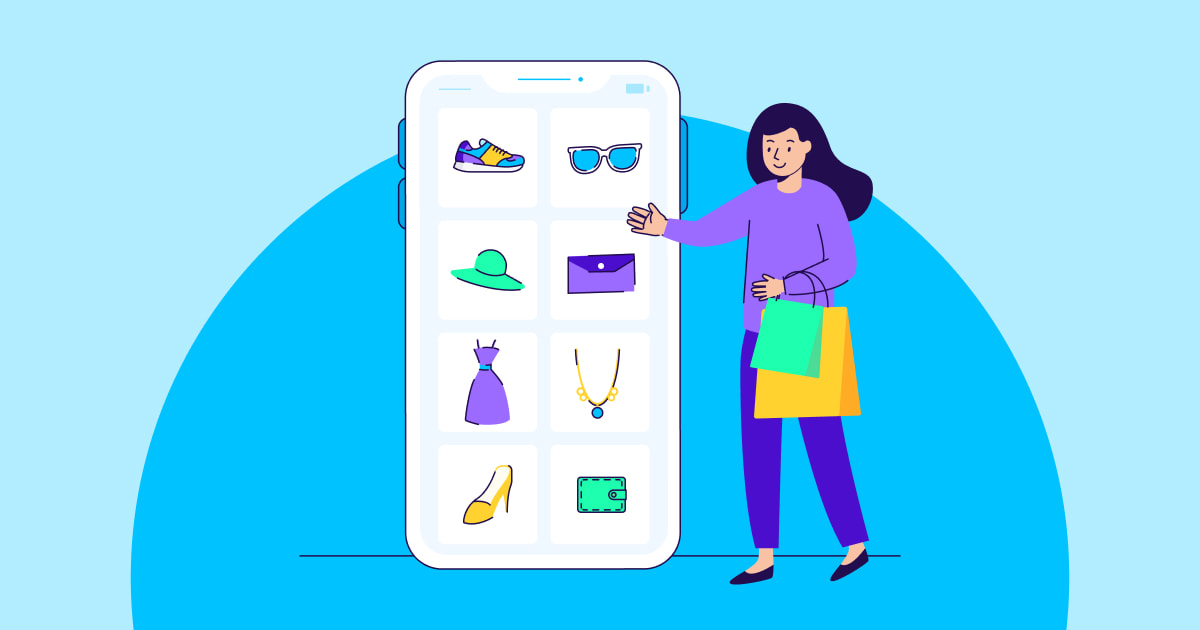

What’s m-commerce?
It is undeniable that COVID-19 forever changed the technological landscape.
Mobile shopping has experienced turbulent growth at a time where every aspect of our lives shifted to a contactless world. From virtual doctor visits to managing finances, everything today can be managed on our mobile devices, which is why mobile commerce is becoming increasingly crucial for businesses today.
Mobile commerce, mCommerce or m-commerce for short, is the buying and selling of products and services via a mobile device. While e-commerce refers to any financial transaction conducted on the internet, m-commerce is specific to mobile devices, which includes mobile shopping, banking, and payments.
With mobile adoption being at its highest rate ever, it’s unquestionable that all businesses will need to invest in m-commerce.
In 2021, retail m-commerce sales reached a staggering $359.32 billion, a 15.2% increase from the previous year. And in the US, m-commerce alone is expected to reach $728.28 billion and account for 44.2% of ecommerce sales.
What are the m-commerce service types?
There are several types of m-commerce services that aren’t just limited to shopping apps. Here are the most popular categories:
Mobile payments
Mobile payment apps, also known as digital wallets, are apps that are linked to bank accounts to quickly and securely make purchases using a mobile device. Some mobile payment apps include Apple Pay, Google Pay, and Visa Checkout.
Mobile point of sale (POS)
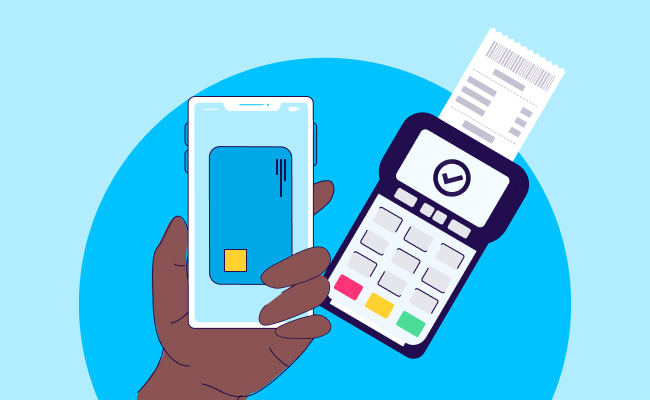
Mobile point of sale systems enable stores to accept payments and process transactions of customers who pay using their mobile devices. This often includes contactless payments for Apple Pay and Google Pay, with the associated systems consist of not only the hardware, but also the software and payment processor.
Person-to-person mobile payments
Person-to-person or peer-to-peer (p2p) payment apps enable people to exchange money. Whether you’re splitting a dinner bill, making a donation, or paying rent, p2p mobile payment apps are connected to individual bank accounts to exchange funds. The most popular apps include Venmo, PayPal, and CashApp.
Mobile shopping
The two most popular mobile shopping services are dedicated shopping apps and mobile-first websites. However, mobile shopping also includes social shopping platforms like Pinterest, Facebook, and Instagram — that allow users to make purchases from online stores.
Fintech: mobile banking and investments
Mobile banking and investment apps allow users to access bank accounts, make payments, manage investments, pay off loans, and access other financial services, making financing apps like Klarna and Afterpay exceedingly popular in the m-commerce world.
M-commerce vs e-commerce: What’s the difference?

E-commerce is the umbrella term that refers to the buying and selling of goods and services online. M-commerce is a subcategory of e-commerce, specific to online transactions using mobile phones and tablets.
Mobile-first economy
According to Statista, 63% of consumers prefer shopping through a mobile app over websites. 57% of consumers say mobile shopping apps are much faster, and 31% find them to be more rewarding. Because of that, simply optimizing a website for mobile is not nearly enough to succeed in an increasingly crowded marketplace.
More people are shopping through their phones
The two greatest drivers for mass m-commerce adoption is both convenience and security. As the access to mobile devices and the internet is readily available across the world, consumers are able to make purchases from nearly anywhere.
In the advent of digital wallets like Apple Pay, making a purchase on your phone is a frictionless experience. Users only need to upload their credit card information once and can make purchases with a tap of a button.
Additionally, digital wallets require an extra layer of security and authentication methods in order to keep your financial information secure, such as Face ID or Touch ID, whereas desktops don’t.
M-commerce technology is leading innovation
Mobile commerce technology is improving faster than ever before. Mobile wallets are becoming more secure, p2p payments are more prevalent, and brands are finding better ways to integrate mobile technology into their marketing mix.
Ikea, for example, has an augmented reality app to help shoppers measure and visualize how a furniture piece would fit their homes.
M-commerce and eCommerce purchase behaviors are worlds apart
A mobile-optimized website is not enough. Rather than being an afterthought, m-commerce requires an investment in delivering on specific, mobile-first user behavior.
For example, shoppers who spend between $100,000 – $150,000 per year are more likely to make purchases on their phones than on desktop computers, while in-car shoppers spent $330 billion on food, coffee, and groceries.

The advantages and disadvantages of m-commerce
Reach your target customers faster
Investing in m-commerce enables businesses to take on a true omnichannel marketing approach, allowing them to reach their target customers at the right time and place.
Whether it’s through push notifications, offering in-app rewards, or geotracking, you can engage with your customers faster and more accurately than ever before.
Consumers prefer apps
57% of customers won’t recommend businesses with poorly designed mobile sites and 50% of online shoppers would stop using the site altogether. On top of this, mobile apps are 1.5x faster at loading data and search results compared to web browsers.
In short, positive m-commerce experiences can make or break your business — now that it holds much greater weight than ever before.
High adoption rates
Consumer habits are changing around the world, and mobile commerce is expected to be a major commercial channel. For example:
- COVID-19 has normalized contactless shopping experiences.
- Over 42% of shoppers made mobile wallet purchases in 2021.
Adoption rates are extremely high and are expected to continue to rise, which means consumers are getting smarter and the demand for stellar m-commerce experiences will increase.
M-commerce customers are more quick to purchase
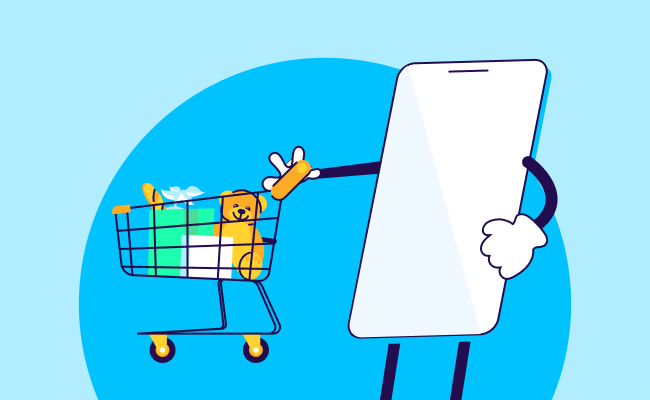
Customers have an accelerated buyer journey on mobile for several reasons:
- Apps outperform browsers in load times, which explains why 90% of mobile users spent their time using apps over mobile browsers in 2021.
- Apps are downloaded and stored and help users save buffering times with preloaded preferences.
- The payments ecosystem has also improved tremendously and reduced friction from view to purchase.
- One-click purchasing and mobile wallets have made it safe and easy to purchase online.
- Social shopping platforms like Facebook, Instagram, and Pinterest have improved the mobile shopping experience.
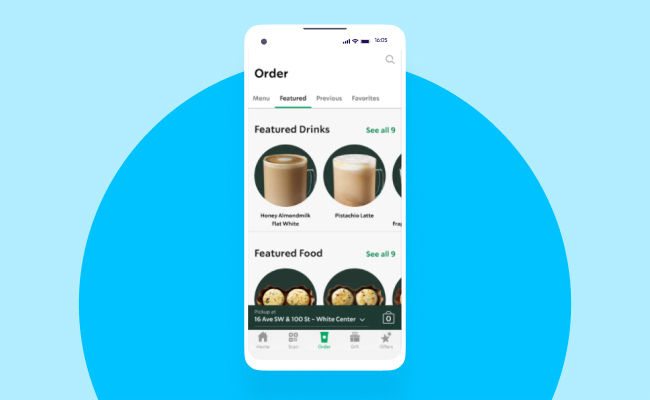
The disadvantages of m-commerce
While there is tremendous upside to m-commerce, there are also a few drawbacks to consider.
Increasing data privacy concerns
In the advent of Apple’s ATT policy highlighting data privacy, mobile users are increasingly becoming concerned about how their data is being used. Mobile commerce services need to not only keep their customers secure, but also effectively communicate the steps they are taking to ensure their data is safe.
High startup and maintenance costs
As mentioned previously, optimizing an ecommerce site for mobile is not enough. To remain competitive in a highly saturated marketplace, brands must invest in the development and maintenance of mobile-first apps and websites, which could be resource-intensive.

M-commerce best practices
A scaled-down desktop shopping experience is not nearly as effective as a mobile-first approach. Due to the vast differences in purchase behavior between mobile and desktop shoppers, mobile shopping experiences require its own strategic design and user experience.
So, here are the top strategies for executing a successful mobile commerce business:
Start with a great onboarding experience
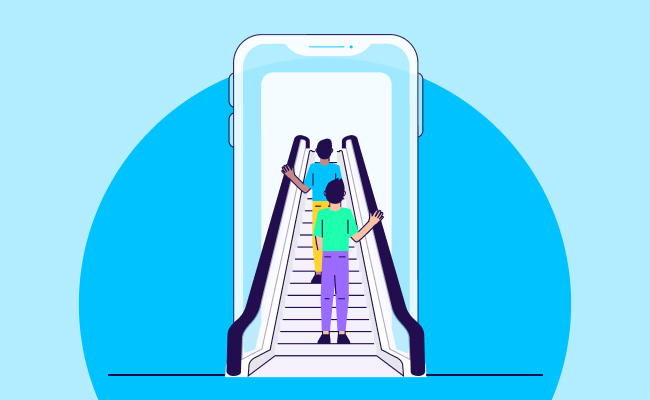
An exceptional m-commerce begins by delivering a great first impression, capturing the customer’s information, and showing off early.
Start by making signing up for an account a breeze. Keep your prompts short and sweet — with only a few steps to navigate through the app. And lastly, wow them early. Show off your coolest features as early as possible.
Load quickly
Knowing that over 61% of Google searches are now on mobile devices, Google has begun penalizing sites that don’t deliver great mobile shopping experiences. According to their research, a one-second delay in mobile load time can impact conversions by up to 20%, so ensure your website and apps load quickly.
Easy product search and personalized suggestions
There’s no way to showcase all your products and services on one small mobile screen. Ensure there’s an intuitive filtering and search system that allows mobile users to narrow down their search and look for products that meet their specific needs.
Additionally, be sure to provide personalized product suggestions based on their shopping behavior.
For example:
- Amazon uses a ‘people also bought’ feature that shows what products pair well with the one in your cart.
- Consider providing auto-fill suggestions in the search history to speed up searches.
- Ensure your search results are reliable and accurate.
Streamline the checkout process
Every slow loading screen, poorly timed pop up notification, or misplaced button can cause a mobile shopper to second guess their purchase and abandon their shopping cart.
Additionally, to create a safe shopping experience, ensure you’re thoroughly testing your payment screen to ensure little to no customers are dropping out of your funnel.
Collect first-party data
In a world where mobile users are increasingly becoming concerned about data privacy, it’s integral to prepare for a cookie-less internet.
Apple’s ATT data privacy policy compounded with Google Chrome’s plans to block 3rd party cookies in 2023, m-commerce services need to invest in collecting first-party data.
Why not make email sign ups easy by providing a discount sent to your users’ inbox? You can also collect zero-party data like quizzes that show personalized product recommendations upon completion.
Set and test valuable KPIs
Always improve your shopping experience by measuring, testing, and improving the metrics that matter. Here are some KPIs to consider:
- Percent of users converted into active users
- Cost per customer acquisition (CAC) per channel
- User retention
- Session length
- In-app purchases
- Average sale per user
Re-engage with your audience at the right time
Whether the internet cuts out or if shoppers hesitate at the very last minute, executing a re-engagement strategy can help push them over the finish line.
Whether it’s an email, retargeted ads, push notifications, or a text message, ensure your messages are personalized, but used sparingly.
Make it accessible
North American and European laws are increasingly responsive to the needs of mobile users with disabilities. Ensure that your shopping experience is accessible to all by adhering to the following Web Content Accessibility Guidelines (WCAG): be perceivable, operable, understandable, and robust.

The future of m-commerce
The rise of m-commerce does not mean the end of in-store shopping. Instead, technology will help integrate online and offline shopping experiences more effectively than before.
In fact, 72% of consumers expect to still shop in-store once COVID numbers subside, as the all-senses encompassing experience of physical shopping is still unmatched on several levels.
Let’s dig a little deeper into the online-offline shopping integration and what it actually means:
Order ahead & curbside pickup
Click-and-collect shopping experiences have been popularized due to heightened COVID-19 safety measures. 22% of shoppers expect to use curbside pickup, mobile order-ahead, or rapid in-store pickup, regardless of the state of the pandemic.
This is a telltale sign of the integration of mobile technology with in-store shopping experiences.
Augmented reality as cost savings strategy

Shopping through your phone shouldn’t be limited to scrolling through an endless feed or products. As mobile technology improves, so will the m-commerce shopping experience. The greatest indicator of this is how brands are leveraging augmented reality (AR) to make shopping more personalized and engaging.
Brands that use augmented reality to showcase products can more accurately set customer expectations by allowing them to try products before purchasing. This ultimately saves the business’ bottom line, as it reduces the number of product returns and complaints.
Loyalty through couponing
Businesses that want to succeed in m-commerce must employ a coupon marketing strategy, which comes in several forms:
- Loyalty programs
- Couponing apps
- Rebates, daily ads
And promo codes. Mobile couponing has enabled stores to generate loyalty at little to no cost compared to traditional couponing. For the consumer, checking for the best deals can be done within a single app. And although consumers today are extremely price sensitive, they believe that coupons improve brand loyalty.
In 2021 alone, 40% of surveyed grocery shoppers used promotions and coupons from mobile apps and 45% of consumers preferred email, while a staggering 69% of consumers love receiving coupons.
Voice search will become more natural
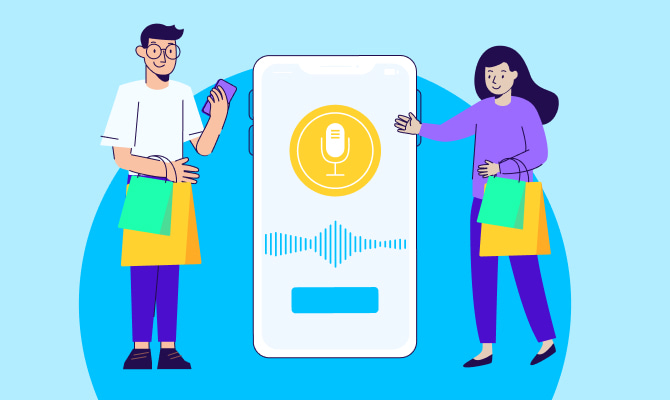
Hey Siri, did you know 62% of consumers would rather use voice search when multitasking? Well now you do. Whether it’s washing the dishes or driving, voice search is increasingly becoming a part of everyday life. Nearly 5.5 million US adults make purchases through voice on a regular basis.

Key takeaways
- In the US, m-commerce is projected to create $728.28 billion in sales, accounting for 44.2% of ecommerce.
- It’s not enough to have a mobile-friendly website. In order to deliver on specific, mobile-first user behaviors, m-commerce requires more than an afterthought.
- Mobile commerce customers tend to have much faster purchase behavior than ecommerce customers due to the ease and convenience of the purchasing process.
- Successful m-commerce strategies include: great onboarding, fast load times, personalization, effective re-engagement, accessibility, and seamless checkouts.
- The pandemic has forever changed purchasing behavior, integrating online and offline shopping through mobile devices. Voice search, click-and-collect, augmented reality, and couponing are on the rise and will continue to be in the year ahead.
